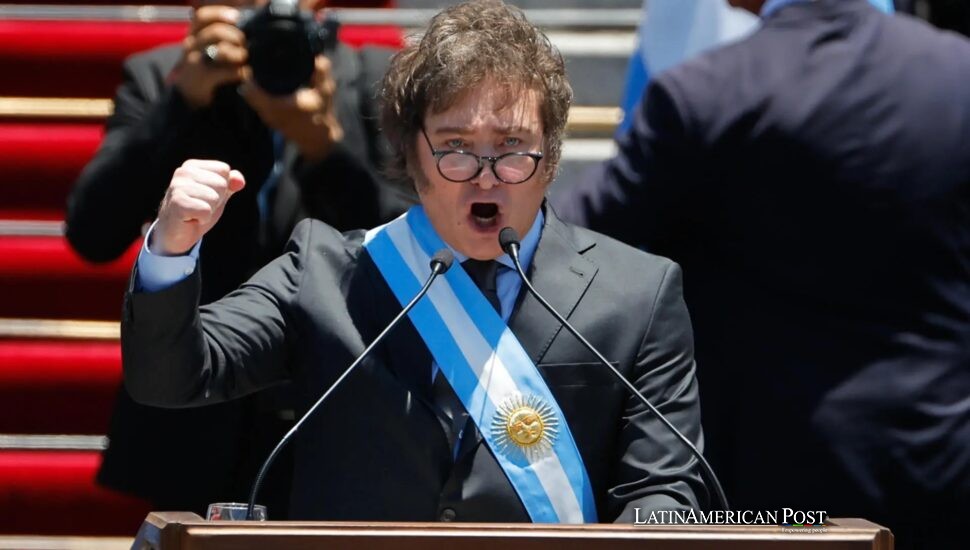Argentina’s Currency Overhaul: A Gamble with Global Repercussions

In a dramatic shift that caught many off guard, Argentina’s president Javier Milei has lifted longstanding currency controls and introduced a new exchange-rate system, banking on substantial international loans. Observers hail the move as bold yet fraught with unpredictable consequences.
The Surprise End to “El Cepo“
Argentina’s money situation has been marked by rules on foreign money, named “el cepo,” which started in 2011. Those rules grew more complex. Because of this, people plus companies had trouble purchasing dollars without limits. Many critics likened the system to a straitjacket on the economy, driving a ballooning parallel market and fueling a frustrating array of informal methods for accessing foreign currency.
Javier Milei pledged to end the controls during his presidential campaign. He asserted that the open dollar movement would boost commerce, improve consumer confidence, and draw necessary capital. Most people did not foresee action before the legislative elections scheduled for October. For many analysts, an abrupt end to the cepo always carried the specter of a sharp currency devaluation and a potentially explosive surge in inflation. That is why surprise gripped both local markets and international observers when the news arrived on Friday evening that Argentina would radically loosen its foreign exchange regime.
Milei’s government insisted that the timing had a purpose. They claimed a longer delay risked worse market speculation. Anxious investors pushed up dollar prices recently. They dreaded an inevitable devaluation. The Central Bank lost foreign reserves. This happened when it tried to defend an overvalued currency. According to government statements, the new strategy was made possible by securing nearly 20 billion dollars from the International Monetary Fund and loans from other multilateral bodies—including 12 billion from the World Bank and 10 billion from the Inter-American Development Bank. These funds strengthen Argentina’s reserves. They give financial support as the country shifts to a new exchange rate system.
The maneuver carries risks. Critics caution that a miscalculation can boost inflation. The rate remains high every month. Fearful consumers recall past devaluations that turned everyday staples into unaffordable luxuries almost overnight. With the peso at risk of sliding sharply, businesses and citizens alike brace themselves for Monday’s market opening, uncertain about how quickly prices might soar.
High Hopes—and Higher Risks
One of the immediate shifts is the decision to allow the Argentine peso to float freely, within a designated band of 1,100 to 1,400 pesos to the dollar. Last Friday, the official rate closed at 1,097.50 pesos, placing it below the lower threshold. When the market reopens, the exchange rate will virtually guarantee a jump, igniting an adjustment period for prices of imported goods, energy, and even basic groceries.
Many economists describe such a float as a necessary correction, but a sizable faction remains cautious. Argentina’s inflation rate was already inching above 3% per month, a level that most developed economies see in a year or more. If a spike in the official rate pushes inflation closer to double digits monthly, consumer spending power could shrink dramatically. That, in turn, may deter the very investments Milei seeks to attract.
Before this decision, the Central Bank fought hard to stabilize the peso. This required spending nearly 5 billion dollars of gross reserves since January. At the moment of the announcement, Argentina’s net reserves stayed at a negative value. Because of this, many thought the government would act quickly. Now, with an influx of international funding, Milei is betting that a stronger reserve position will help Argentina weather the storm of devaluation shock. Skeptics note that even these billions could evaporate quickly if markets sense a lack of clarity or conviction in the new policy.
Beyond the money question, there is a political dimension. Milei secured a broad mandate, which rested partly on commitments to change Argentina’s economy. Populist policies often hampered this economy. Some supporters consider the end of the cepo a clear signal for progress. Opponents worry that quick easing may cause societal disruption. Significant inflation could occur, preventing needy groups from buying necessary supplies.
Inside the New Exchange Regime
Key to Milei’s plan is a set of three pillars that define the revamped currency framework:
Floating with a Safety Net:
The government fixed a trading band from 1,100 to 1,400 pesos per dollar. The Central Bank promises little involvement inside this range, so the peso shifts based on market action. When the rate falls below the bottom boundary, the Central Bank could act – it buys dollars, boosting the exchange rate. Should the peso surpass the top boundary, it might sell reserves to rapid devaluation. Official statements clarify that, despite this “hands-off” approach, the government can still step in occasionally to temper extreme volatility or ensure strategic accumulation of reserves.
An End to Many Dollar Restrictions:
With the new regulations, individuals and businesses face fewer hurdles when buying currency. Gone is the “dólar blend” —a special exchange rate for export sectors that complicated foreign trade— and many longstanding caps on the volume of dollars citizens can acquire or send abroad. Companies can once again convert profits and repatriate funds with fewer administrative hoops, though certain conditions around timing and reporting remain. The administration hopes this openness will crack down on black-market currency exchanges, returning transactions to formal channels.
Restructured Access to External Loans:
Argentina’s precarious reserves stand to be replenished almost immediately with substantial loans—an injection of around 15.5 billion dollars in the short term. Of that sum, roughly 20 billion comes via the IMF, while an additional 22 billion stems from joint commitments by the World Bank and the Inter-American Development Bank. The government touts this influx as a game-changer, more than doubling the Central Bank’s current reserves. For their part, these institutions emphasize that funding depends on Argentina’s adherence to firm fiscal rules. That could curb the government’s ability to introduce popular spending before legislative elections.
These strategies display a management group resolved to depart from a history of gradual currency adjustments. Officials characterize the new approach as the bold step Argentina needs after years of stopgap measures. Yet boldness can come at a price: a sudden, uncontrolled slide in the peso could spark a wave of inflation that imperils economic stability and undermines public trust.
In the days ahead, Argentines face a delicate balancing act. Business owners have requested easier access to currency for a while. They are ready to grow imports, increase exports, and handle foreign debts more easily. Workers and families expect living costs to increase once the market reopens. Many recall that major currency shifts in Argentina’s past have often led to recession, layoffs, and widespread angst.
Also Read: Mercosur’s Expanding Horizon Facing Global Trade War
For now, the world looks on as Argentina wages its latest battle with currency turbulence—one that may well determine the success or failure of Milei’s government. If the government utilizes new IMF money, maintains budget control, and stops inflation, Argentina might become more robust and accessible to international commerce. A peso drop and increased inflation could trigger a quick, severe reaction. This situation would change the current optimism into more economic instability. The stakes could hardly be higher for a nation that, time and again, has teetered between reformist euphoria and the bruising realities of the global market.





